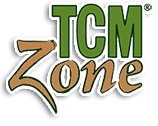The Future of TCM Education: Adapting Traditional Training for Modern Clinical Challenges

By: Alex Qiu
Traditional Chinese Medicine (TCM) education is at a critical juncture, evolving rapidly to address modern clinical challenges and the growing integration of TCM within contemporary healthcare systems. As the demand for more comprehensive and evidence-based practices increases, advanced practitioners must navigate a changing landscape of educational standards, digital learning tools, and expanded clinical competencies. This evolution aims to create TCM practitioners who are not only skilled in traditional techniques but also adept at integrating TCM with modern medical practices, thus enhancing patient care and outcomes.
Innovations in TCM Curriculum: Bridging Tradition and Modernity
1. Expanding Clinical Competencies and Integrative Approaches
One of the significant advancements in TCM education is the expansion of clinical competencies, with an emphasis on integrative approaches. Modern TCM curricula are incorporating more biomedicine courses, such as pathology, pharmacology, and diagnostics, allowing practitioners to better understand and collaborate with Western medical counterparts.
Curriculum Example: Programs at institutions like the American College of Traditional Chinese Medicine (ACTCM) have expanded to include integrative case management, where students learn to apply TCM theories alongside Western diagnostic methods. For example, advanced courses in integrative oncology not only cover TCM herbal formulations for managing chemotherapy side effects but also include instruction on interpreting lab results and understanding tumor markers, bridging the gap between traditional knowledge and contemporary clinical practice (ACTCM, 2023).
2. Case-Based Learning and Clinical Simulation
To address the complexity of modern clinical scenarios, case-based learning and clinical simulations are being increasingly adopted. These methods help students develop critical thinking and diagnostic skills in real-world contexts, particularly for complex conditions that require integrative approaches.
Advanced Clinical Simulations: The use of simulation labs equipped with virtual patients allows for the practice of diagnostic and treatment skills in a controlled environment. For instance, students at the Shanghai University of Traditional Chinese Medicine participate in high-fidelity simulations that replicate acute care settings, such as stroke or myocardial infarction, where TCM interventions are used alongside emergency medical procedures. This not only improves technical skills but also enhances decision-making under pressure (Shanghai University of TCM, 2023).
Integration of Digital Learning Tools in TCM Education
 3. E-Learning Platforms and Digital Resources
3. E-Learning Platforms and Digital Resources
The advent of digital learning platforms has transformed TCM education, making it more accessible and adaptable to diverse learning needs. Advanced practitioners can now engage with a plethora of online resources, including interactive modules, webinars, and digital herbariums that provide detailed information on herb-drug interactions and advanced herbal prescriptions.
E-Learning Example: The Pacific College of Health and Science offers an online Master of Science in Traditional Oriental Medicine, which utilizes a flipped classroom model. Students engage with lecture content online through interactive modules before applying their knowledge in practical, in-person clinical settings. This model has been particularly effective in teaching complex subjects such as neuroacupuncture, where students can review detailed anatomical videos and case studies online before hands-on practice (Pacific College of Health and Science, 2024).
4. Virtual Reality (VR) and Augmented Reality (AR) in TCM Training
Advanced technologies like VR and AR are being integrated into TCM training to enhance the learning of anatomy, acupuncture point location, and treatment techniques. These technologies provide a 3D, immersive learning experience that allows for more precise and nuanced understanding of complex anatomical relationships.
Advanced Application: VR simulations are used to teach scalp and auricular acupuncture techniques, where the precision of needle placement is critical. A study conducted by the Beijing University of Chinese Medicine showed that students who trained with VR models had a 30% higher accuracy rate in needle placement compared to those who used traditional 2D diagrams (Li et al., 2023). These tools also help practitioners visualize the meridian pathways in relation to Western anatomical structures, further supporting integrative practice.
Expanding Clinical Competencies: From Specialization to General Practice
 5. Specialization Tracks and Advanced Certifications
5. Specialization Tracks and Advanced Certifications
Modern TCM education is increasingly offering specialization tracks that allow practitioners to focus on areas such as oncology, dermatology, or sports medicine. These tracks often include advanced certifications that recognize expertise in specific fields, thereby enhancing the practitioner’s credibility and expanding their clinical capabilities.
Specialization in Integrative Oncology: For example, the Zhejiang Chinese Medical University offers a postgraduate certification in Integrative Oncology, which covers advanced herbal pharmacology, TCM oncology-specific acupuncture protocols, and collaborative care strategies with oncologists. Practitioners are trained not only in supportive care for cancer patients but also in understanding the mechanisms of chemotherapy resistance and how TCM can mitigate these effects (Zhejiang Chinese Medical University, 2023).
6. Enhanced Focus on Evidence-Based Practice
To meet modern clinical challenges, TCM education is increasingly emphasizing evidence-based practice. This shift involves training practitioners to critically evaluate research, understand the limitations of traditional methods, and integrate new scientific findings into their clinical work.
Research Integration: The University of Hong Kong’s School of Chinese Medicine has developed a research-based curriculum where students actively participate in clinical trials and learn to apply statistical methods in evaluating TCM treatments. This approach not only enhances their research literacy but also ensures that their practice remains current and scientifically validated (University of Hong Kong, 2024).
Challenges and Future Directions
7. Navigating Regulatory and Standardization Challenges
As TCM becomes more integrated into mainstream healthcare, practitioners face the challenge of navigating diverse regulatory environments and standards of care. There is a growing need for standardized education and certification processes that ensure consistent quality and safety in practice.
Global Standardization Efforts: The World Federation of Chinese Medicine Societies (WFCMS) has been working on global standards for TCM education, advocating for a unified curriculum that includes both traditional teachings and modern medical knowledge. These efforts aim to harmonize training across different countries, thus enhancing the credibility and integration of TCM in global health systems (WFCMS, 2023).
8. Preparing Practitioners for Digital Health Integration
The future of TCM will likely involve greater integration with digital health platforms, including telemedicine, electronic health records, and AI-driven diagnostics. Preparing practitioners for this shift requires education that goes beyond traditional training to include competencies in digital literacy and telehealth management.
Digital Integration in Practice: Schools such as the Beijing University of Chinese Medicine have introduced courses on digital health management, teaching practitioners how to use AI tools for pattern diagnosis, track patient outcomes via digital platforms, and engage in telehealth consultations. This not only broadens the scope of TCM practice but also aligns it with the future direction of global healthcare (Beijing University of Chinese Medicine, 2024).
Conclusion
The evolution of TCM education is critical in addressing the challenges of modern clinical practice. By expanding clinical competencies, integrating digital tools, and emphasizing evidence-based approaches, TCM education is positioning itself to better equip practitioners for the complexities of contemporary healthcare. As these educational innovations continue to unfold, the future of TCM looks promising, with practitioners who are not only rooted in tradition but also adept at navigating the evolving landscape of integrative medicine.
References:
- American College of Traditional Chinese Medicine (ACTCM). (2023). Integrative Case Management in TCM Education.
- Pacific College of Health and Science. (2024). Online Learning Models in TCM Education.
- Beijing University of Chinese Medicine. (2023). Virtual Reality in TCM Training: A Clinical Study.
- University of Hong Kong. (2024). Evidence-Based Practice in TCM Education.
- World Federation of Chinese Medicine Societies (WFCMS). (2023). Global Standardization in TCM Education.
- Zhejiang Chinese Medical University. (2023). Specialization in Integrative Oncology.
- Shanghai University of Traditional Chinese Medicine. (2023). Clinical Simulations in TCM Training.
- Li, Y., et al. (2023). “Enhancing Acupuncture Precision with Virtual Reality: A Study on Student Outcomes.” Journal of TCM Education.


 3. E-Learning Platforms and Digital Resources
3. E-Learning Platforms and Digital Resources 5. Specialization Tracks and Advanced Certifications
5. Specialization Tracks and Advanced Certifications